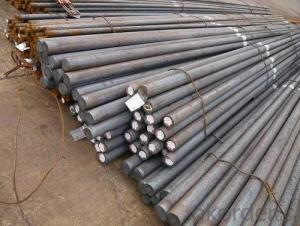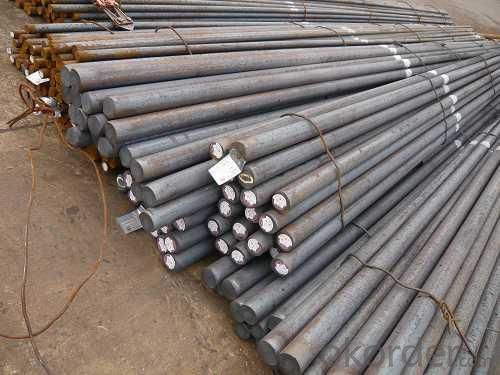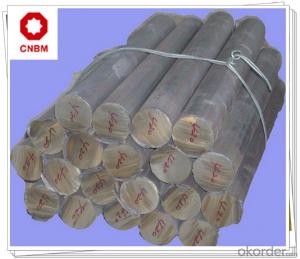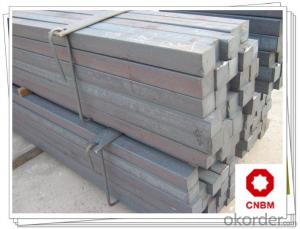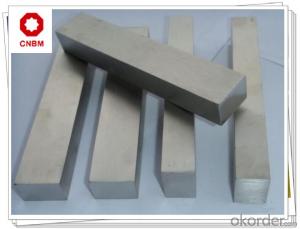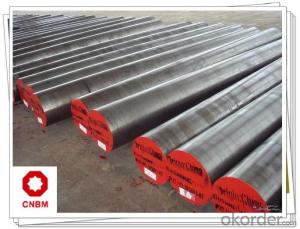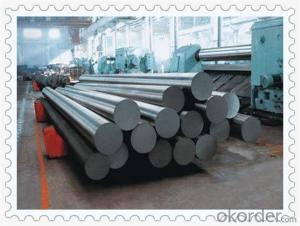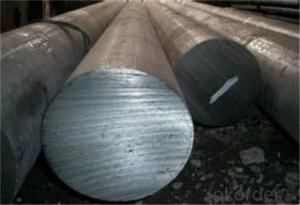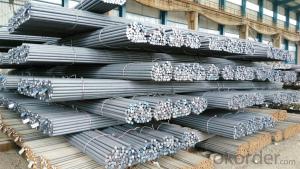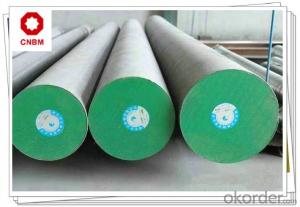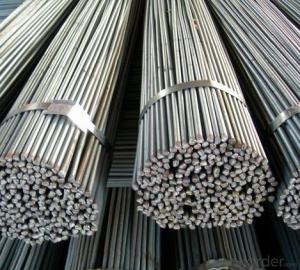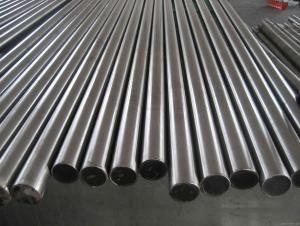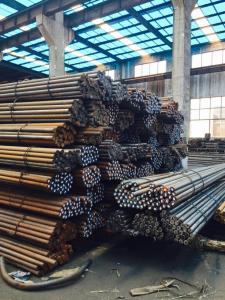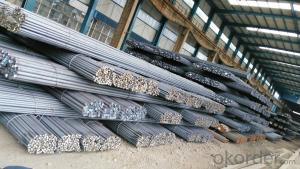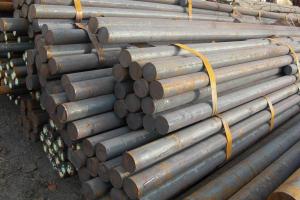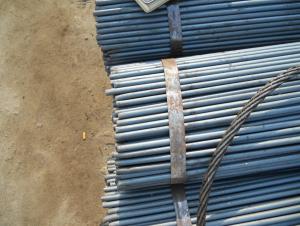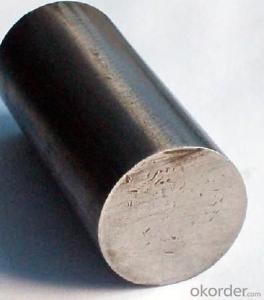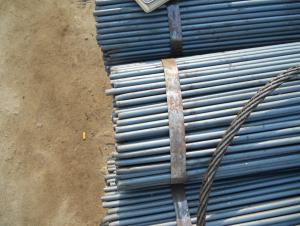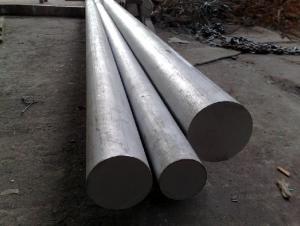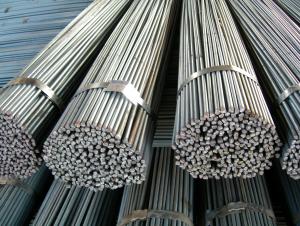Round Bar with the Best Price Carbon Steel Round Bars 16MM-80MM
- Loading Port:
- Tianjin
- Payment Terms:
- TT or LC
- Min Order Qty:
- 27 m.t.
- Supply Capability:
- 25000 m.t./month
OKorder Service Pledge
OKorder Financial Service
You Might Also Like
Product Description of Round Bar with the Best Price Carbon Steel Round Bars 16MM-80MM:
1. Material: Alloy structural steels, carbon structure steels, alloy tool and model steels,etc.
2. Process: EAF + LF + VD + Forged + Heat Treatment (optional)
3. Delivery condition:Hot forged +Rough machined (black surface after Q/T)+ Turned (optional)
4.Technical Data: Chemical Composition, Physical Properties and Mechanical Testing.
5.Test: Ultrasonic test according to SEP 1921-84 3C/c.
Chemical Composition of Round Bar with the Best Price Carbon Steel Round Bars 16MM-80MM:
C | Si | Mn | P | S | Cr | |
45Cr | 0.42-0.49 | 0.17-0.37 | 0.6-0.9 | Max0.035 | Max0.035 | 0.3 0.4 |
S45C | 0.42-0.48 | 0.15-0.35 | 0.6-0.9 | Max0.030 | Max0.035 | |
1045 | 0.43-0.5 | 0.15-0.35 | 0.6-0.9 | Max0.030 | Max0.050 |
Application of Round Bar with the Best Price Carbon Steel Round Bars 16MM-80MM:
1 Can be used in many fields such as building, automobile, shipbuilding,
petrochemical, machinery, medicine, food, electric power, energy, space, building
and decoration, etc.
2 Can be made into mould template, mortise pin, column
3 This kind of steel have good mechanical property, is widely used in structural parts
4 which may support stress alternation, especially made into some connecting
rods, bolts, wheel gear...
5 This kind of steel is the most common blanks and materials of shaft part
Pictures of Round Bar with the Best Price Carbon Steel Round Bars 16MM-80MM:
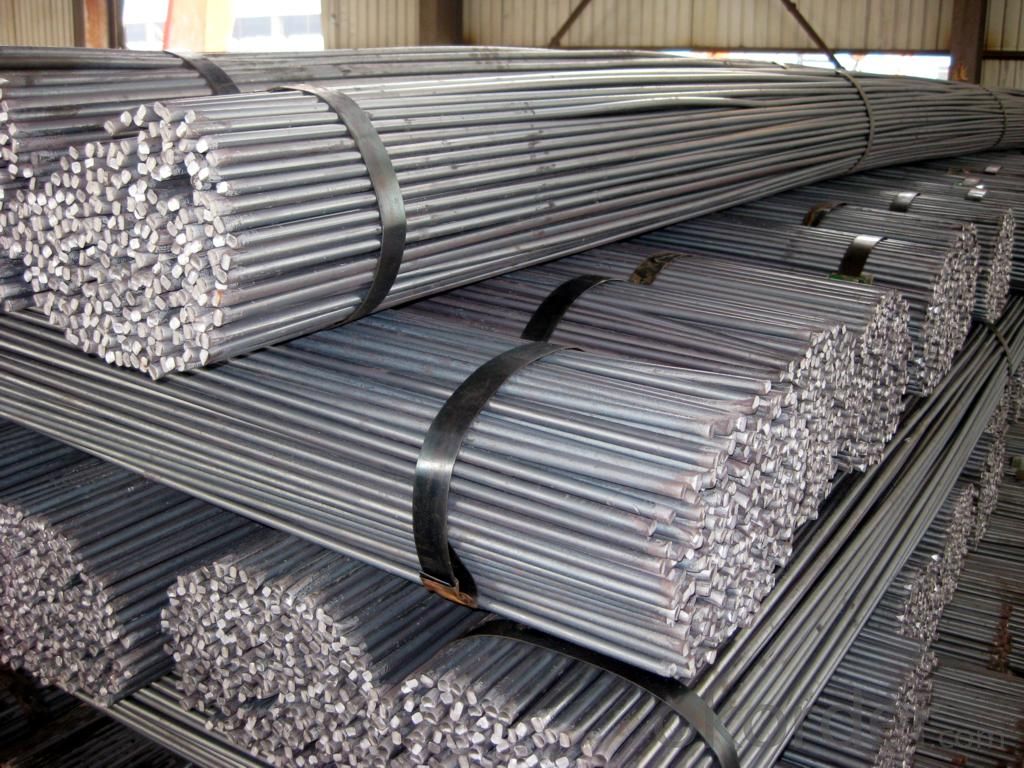
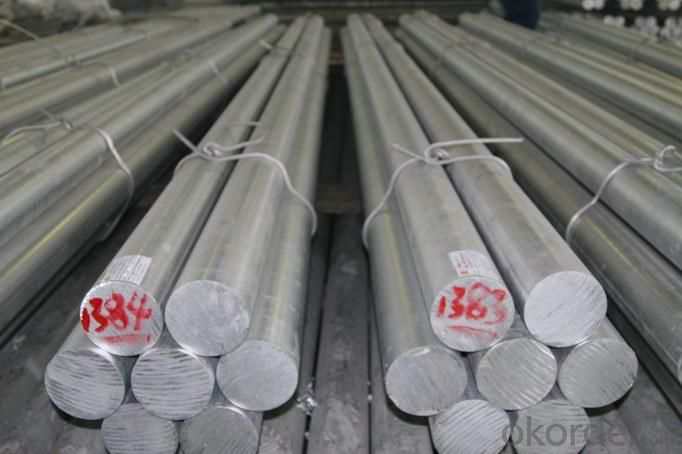
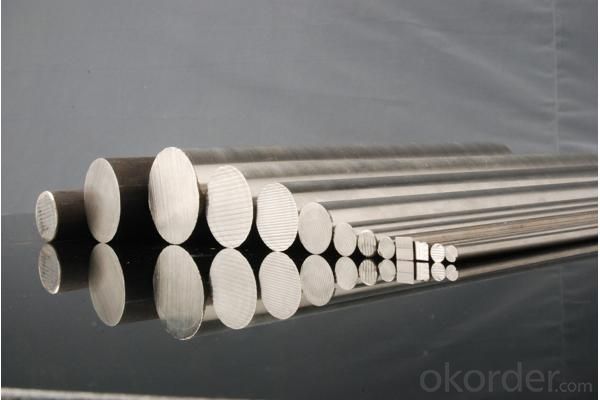
- Q: Could you tell me what is the difference between steel pipe and round steel?
- Widely used in the manufacture of structural and mechanical parts, such as oil drilling pipe, automobile transmission shaft, bicycle frame and steel scaffolding used in construction. Making ring parts with steel tubes can improve data application rate, simplify manufacturing process, save data and work hours, such as rolling bearings, rings, Jack sleeves, etc., and have been widely used in steel pipe manufacture.
- Q: Can steel round bars be used for making conveyor belts or rollers?
- No, steel round bars are not typically used for making conveyor belts or rollers. Conveyor belts and rollers are usually made from materials such as rubber, polyurethane, or other flexible and durable materials that can withstand the constant movement and friction involved in conveying items.
- Q: How do you calculate the deflection of a steel round bar?
- To calculate the deflection of a steel round bar, you can use the Euler-Bernoulli beam theory formula, which states that the deflection is proportional to the applied load, the length of the bar, and the fourth power of its diameter. By inputting these values into the formula, you can determine the deflection of the steel round bar.
- Q: Can steel round bars be used for making propeller shafts?
- It is indeed possible to utilize steel round bars in the production of propeller shafts. The utilization of steel in propeller shafts is widespread due to its robustness, endurance, and ability to withstand corrosion. In particular, round bars are frequently favored due to their shape, which offers exceptional strength and load-bearing capabilities. The decision regarding the steel grade and specific properties will be contingent upon the propeller shaft's requirements, such as the desired dimensions in terms of length, diameter, and torque capacity. Moreover, factors like cost, weight, and manufacturability may also play a role in influencing the selection of steel round bars for propeller shafts.
- Q: How do you measure the length of a steel round bar?
- In order to determine the length of a steel round bar, one must utilize a measuring tool, specifically a tape measure or ruler. Firstly, it is important to confirm that the bar is positioned upon a level surface. Subsequently, align the zero mark of the tape measure or ruler with one extremity of the bar. Steadily hold the measuring tool against the bar and proceed to extend it along the entire span until reaching the opposing end. Pay close attention to the measurement displayed on the tape measure or ruler at the precise point where the other end of the bar lines up. This measurement denotes the length of the steel round bar.
- Q: Are steel round bars susceptible to corrosion?
- Corrosion is a common issue for steel round bars, especially when they come into contact with moisture, oxygen, and certain chemicals. The degradation of the material occurs when the metal reacts with its surroundings. Steel, primarily composed of iron, can undergo different types of corrosion, including general corrosion, pitting corrosion, and stress corrosion cracking. When steel round bars are exposed to moisture and oxygen, they can experience general corrosion. This gradual deterioration manifests as the formation of an oxide layer on the surface, resulting in material loss and reduced strength over time. Pitting corrosion is another type that steel round bars may encounter. It involves localized damage on the metal's surface, leading to the creation of small pits. These pits can deepen and expand, compromising the structure and integrity of the bars. Stress corrosion cracking is a specific form of corrosion that affects steel round bars under tensile stress, in the presence of particular corrosive agents. This phenomenon can cause sudden material failure, even when stress levels are below the bars' yield strength. To combat corrosion, protective coatings and corrosion inhibitors are commonly applied to steel round bars. Methods like galvanization, where a layer of zinc is added, or the use of epoxy or paint coatings are often employed. Regular maintenance and proper storage practices are also important in preventing excessive exposure to corrosive elements. It is worth noting that the susceptibility to corrosion can vary depending on the grade and composition of the steel used for the round bars. Certain types of stainless steel, for instance, exhibit higher resistance to corrosion due to the presence of chromium and other alloying elements. In conclusion, while steel round bars can be vulnerable to corrosion, appropriate preventive measures can be implemented to minimize the risk and prolong their lifespan.
- Q: Are steel round bars suitable for use in the manufacturing of valves?
- Yes, steel round bars are suitable for use in the manufacturing of valves. Steel round bars offer excellent strength, durability, and corrosion resistance, making them ideal for various applications including valve production. Additionally, steel round bars can be easily machined and fabricated into different shapes and sizes, allowing for customization according to specific valve requirements.
- Q: Are steel round bars suitable for use in the oil and gas industry?
- Yes, steel round bars are suitable for use in the oil and gas industry. Steel round bars are known for their strength, durability, and high resistance to corrosion, which makes them well-suited for the challenging and harsh environments encountered in the oil and gas industry. These bars are commonly used in various applications such as drilling tools, valves, pipelines, and offshore structures. The oil and gas industry involves operations in offshore rigs, refining facilities, and pipelines that are exposed to extreme temperatures, pressures, and corrosive substances. Steel round bars are capable of withstanding these conditions and maintaining their structural integrity, making them a reliable choice for critical components. Another advantage of steel round bars is their versatility. They can be easily machined, welded, and fabricated into different shapes and sizes, allowing for customization to meet specific project requirements. This flexibility is crucial in the oil and gas industry, which often demands unique and complex equipment. Furthermore, steel round bars offer excellent mechanical properties, including high tensile strength and impact resistance, which are essential for withstanding heavy loads and dynamic forces associated with oil and gas operations. Their ability to handle these loads ensures the safety and reliability of equipment and structures in the industry. In addition to their mechanical properties, steel round bars have a high resistance to corrosion, which is critical in the oil and gas industry due to the presence of corrosive substances such as hydrogen sulfide and saltwater. Corrosion resistance ensures the longevity and reliability of equipment, reducing maintenance costs and downtime. Overall, steel round bars are a suitable choice for use in the oil and gas industry due to their strength, durability, corrosion resistance, and versatility. These properties make them ideal for various applications, ensuring the safe and efficient operation of equipment and structures in this demanding industry.
- Q: How do you measure the straightness tolerance of a steel round bar?
- To measure the straightness tolerance of a steel round bar, you can use a variety of methods depending on the accuracy and precision required. Here are a few common techniques: 1. Visual Inspection: This is a simple method where you visually inspect the bar for any visible deviations from straightness. You can place the bar on a flat surface and look for any bends or curves along its length. However, this method is subjective and may not provide precise measurements. 2. Straightedge Method: In this method, you place a straightedge, such as a ruler or a precision straightedge, against the bar's surface and check for any gaps or spaces between the straightedge and the bar. This method provides a more accurate measurement but can still be influenced by human error. 3. Dial Indicator Method: This method involves using a dial indicator, which is a precision measuring tool, to measure the straightness tolerance. You secure the dial indicator to a fixed point and then move it along the length of the bar, noting any deviations from a straight line. This method provides more precise measurements and can be used to quantify the straightness tolerance in terms of a specific unit of measurement, such as inches or millimeters. 4. Laser Measurement: Laser systems, such as laser alignment devices, can be used to measure the straightness tolerance of a steel round bar. These systems use lasers to project a straight line onto the surface of the bar and then measure any deviations from this line. Laser measurement provides highly accurate and repeatable results, making it suitable for applications that require tight tolerances. It is important to note that the choice of measurement method depends on the required accuracy, the size of the round bar, and the available resources and equipment. Additionally, it is recommended to consult industry standards and guidelines to ensure compliance with specific tolerances and requirements for your application.
- Q: Can steel round bars be used in the manufacturing of jewelry?
- Yes, steel round bars can be used in the manufacturing of jewelry. However, steel is not a common material choice for jewelry due to its hardness and lack of malleability. Other metals such as gold, silver, and platinum are more commonly used for their aesthetic appeal and ability to be easily shaped into intricate designs.
Send your message to us
Round Bar with the Best Price Carbon Steel Round Bars 16MM-80MM
- Loading Port:
- Tianjin
- Payment Terms:
- TT or LC
- Min Order Qty:
- 27 m.t.
- Supply Capability:
- 25000 m.t./month
OKorder Service Pledge
OKorder Financial Service
Similar products
Hot products
Hot Searches
